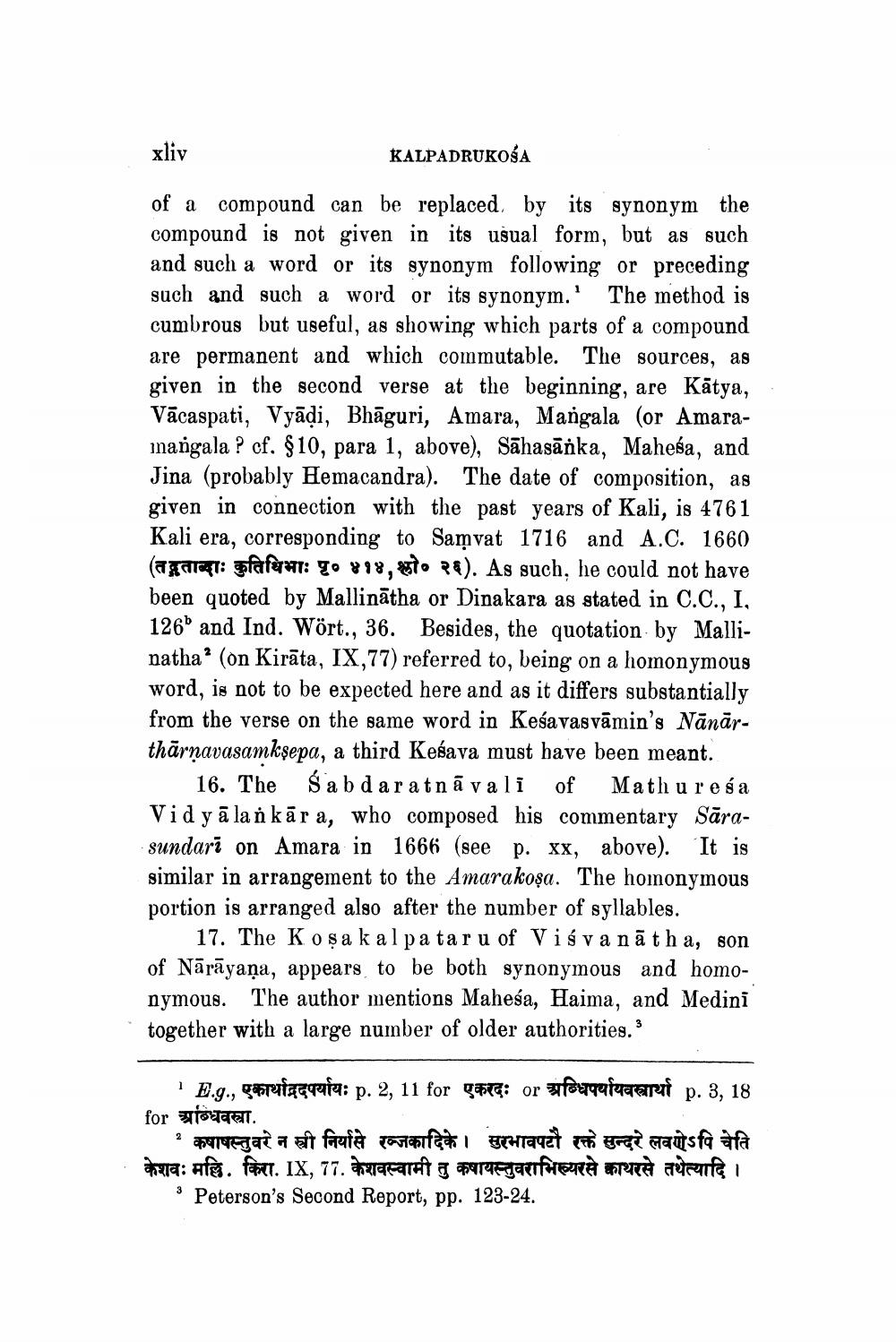________________
xliv
KALPADRUKOSA
of a compound can be replaced by its synonym the compound is not given in its usual form, but as such and such a word or its synonym following or preceding such and such a word or its synonym.' The method is cumbrous but useful, as showing which parts of a compound are permanent and which commutable. The sources, as given in the second verse at the beginning, are Kātya, Vācaspati, Vyādi, Bhāguri, Amara, Mangala (or Amarainangala ? cf. 810, para 1, above), Sāhasāňka, Mahesa, and Jina (probably Hemacandra). The date of composition, as given in connection with the past years of Kali, is 4761 Kali era, corresponding to Samvat 1716 and A.C. 1660 (agarat: gafaferat: CO 818, to pa). As such, he could not have been quoted by Mallinātha or Dinakara as stated in C.C., I, 126 and Ind. Wört., 36. Besides, the quotation by Mallinatha' (on Kirāta, IX,77) referred to, being on a homonymous word, is not to be expected here and as it differs substantially from the verse on the same word in Keśavas vāmin's Nānārthārņavasamkşepa, a third Keśava must have been meant.
16. The Śab dar atnā vali of Math u resa Vid y ā lań kāra, who composed his commentary Sārasundarī on Amara in 1666 (see p. xx, above). It is similar in arrangement to the Amarakoşa. The homonymous portion is arranged also after the number of syllables.
17. The Kosa k al pa tar u of Visva nātha, son of Nārāyaṇa, appears to be both synonymous and homonymous. The author mentions Mahesa, Haima, and Medini together with a large number of older authorities.3
E.g., varetagmata: p. 2, 11 for gaire: or informatatarii p. 3, 18 for tota _' कषाषस्तुवरे न स्त्री निर्यासे रन्जकादिके। सुरभावपटौ रक्त सुन्दरे लवणेऽपि चेति mata: Afg. far. IX, 77. augeareita parega TRÊT ETRE I
* Peterson's Second Report, pp. 123-24.




